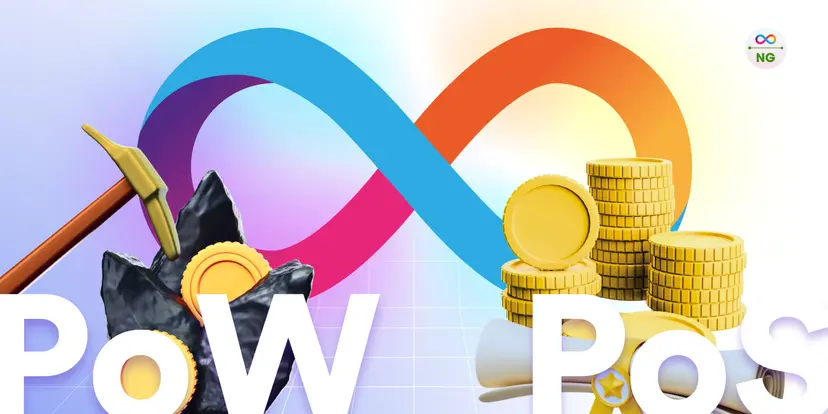
Blockchain technology relies on different methods of “consensus mechanisms” to keep its networks secure and validate transactions. Two of the most popular mechanisms are Proof of Work (PoW) and Proof of Stake (PoS). However, newer blockchain networks like the Internet Computer Protocol (ICP) use alternative consensus models that push the boundaries of what blockchains can achieve. Let’s dive into how PoW and PoS work, what makes ICP’s approach unique, and why it matters.
What Is a Consensus Mechanism?
A consensus mechanism is a way for a blockchain network to ensure all participating computers (or nodes) agree on the validity of transactions. In a decentralized network, this consensus keeps the blockchain secure, reliable, and up-to-date. While PoW and PoS are widely used, ICP has developed its own model to meet unique goals and use cases.
Proof of Work (PoW): The Traditional Approach
Proof of Work is the original blockchain consensus mechanism and is most famously used by Bitcoin. Here’s how it works:
Miners Compete to Solve Complex Problems: In PoW, computers on the network, called miners, solve complex mathematical problems. The first one to solve the problem earns the right to add a block of transactions to the blockchain.
Mining Rewards: The miner who completes the task is rewarded with cryptocurrency, incentivizing them to keep validating transactions.
Energy Consumption: The problem-solving process requires powerful hardware and a lot of energy. This high energy consumption has led to concerns about PoW’s environmental impact, especially as the number of miners grows.
While PoW is highly secure and has proven reliable, its energy demands are a significant drawback, prompting blockchain developers to explore alternatives.
Proof of Stake (PoS): The Greener Option
Proof of Stake is a more recent consensus mechanism that’s designed to be energy-efficient. It works differently from PoW in several ways:
Validators, Not Miners: In PoS, participants called validators are chosen to add new blocks based on how much cryptocurrency they hold and are willing to “stake” or lock up as collateral.
Lower Energy Use: Validators don’t need to solve complex problems, meaning PoS consumes far less energy than PoW.
Rewards and Penalties: Validators earn rewards for validating transactions. However, if they try to disrupt the network, they risk losing their staked assets, which keeps the system secure and discourages dishonest behaviour.
PoS has become a popular choice for newer blockchain networks and is seen as a more sustainable option, suitable for projects looking to reduce their carbon footprint.
A Unique Approach with Threshold Relay and Chain Key Technology
Unlike PoW and PoS, the Internet Computer Protocol (ICP) uses its own consensus model, combining Threshold Relay and Chain Key Technology. This model allows ICP to run a highly scalable, secure, and efficient decentralized network. Let’s break down each of these technologies and see how they contribute to ICP’s vision.
Threshold Relay: The Foundation of ICP’s Consensus Model
Threshold Relay is the backbone of ICP’s consensus mechanism. Here’s how it works:
Distributed Key Generation
Threshold Relay operates with groups of nodes (computers) that collaborate to generate cryptographic keys through a process known as Distributed Key Generation (DKG). No single node controls the key, ensuring decentralization and security.
Group Signatures
In Threshold Relay, each node contributes a part of a secret, creating what’s known as a threshold signature. This combined signature is used to validate transactions and create new blocks. This way, no single node has complete control over the consensus, which enhances security and makes it harder for bad actors to disrupt the network.
Efficient Consensus
Because Threshold Relay doesn’t require solving complex mathematical puzzles, it’s energy-efficient. Nodes take turns contributing to the process rather than competing against each other. This allows ICP to achieve consensus quickly without excessive energy consumption, making it more sustainable than PoW.
Threshold Relay provides ICP with a decentralized, secure way of validating transactions without relying on resource-intensive methods. It also makes ICP adaptable and capable of processing transactions faster than traditional blockchains.
Chain Key Technology: Enabling Speed and Scalability
While Threshold Relay secures the network, Chain Key Technology powers ICP’s scalability and speed, allowing it to handle large-scale applications. Here’s how Chain Key Technology works:
Single Public Key for the Entire Network
Chain Key Technology allows the entire ICP blockchain to operate with a single public key. This single key simplifies verification and enables ICP to process updates quickly and securely, unlike traditional blockchains where each node must verify every transaction individually.
Fast Transaction Processing
Because of Chain Key Technology, ICP can finalize transactions almost instantly. This rapid processing time enables ICP to support internet-scale applications like social networks, productivity tools, and gaming platforms.
Seamless Smart Contract Execution
Chain Key Technology also enables ICP to run complex applications with ease. Developers can build decentralized applications (dapps) directly on ICP’s blockchain without sacrificing speed or security. This feature is unique to ICP, as most other blockchains struggle to support large-scale dapps efficiently.
Together, Threshold Relay and Chain Key Technology allow ICP to provide a new type of blockchain experience, one that resembles the cloud infrastructure we’re used to but operates in a decentralized and secure manner. This combination makes ICP a strong platform for developers who want to create fast, scalable, and secure applications on the blockchain.
Conclusion
Proof of Work (PoW) and Proof of Stake (PoS) each have their strengths and weaknesses, catering to different types of blockchain needs. PoW offers strong security but consumes significant energy, while PoS provides a more sustainable option but requires participants to stake assets. Both mechanisms are widely used and represent valuable approaches to blockchain consensus.
ICP, however, takes a different path with Threshold Relay and Chain Key Technology. This unique model supports a fast, scalable, and sustainable blockchain that can handle internet-scale applications. Moving beyond PoW and PoS, ICP offers a glimpse of what the future of blockchain could look like—a technology that combines the decentralized power of blockchain with the ease and speed of traditional cloud services.



